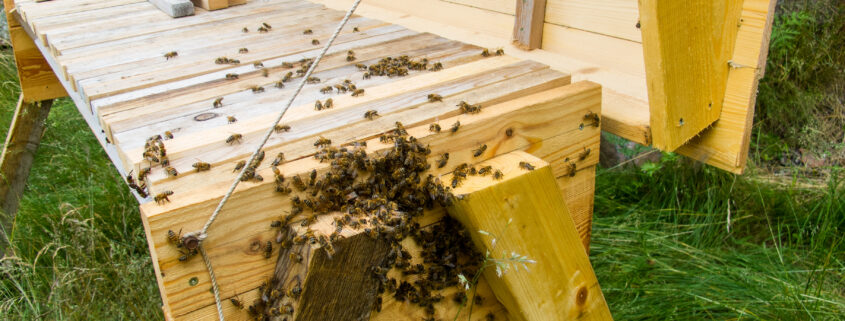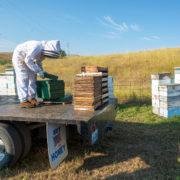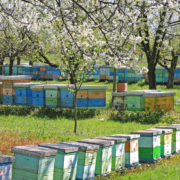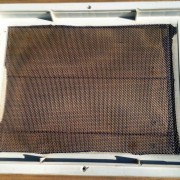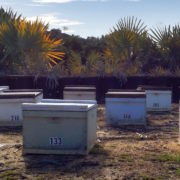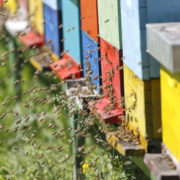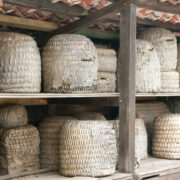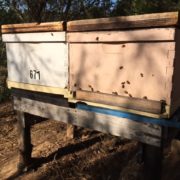A Guide to Beehive Styles for Different Beekeepers
For a beekeeper, choosing the right hive is as important as selecting the perfect honey extractor. It’s not just about aesthetics (although those quaint wooden boxes are undeniably charming), it’s about finding a style that matches your experience level, apiary setup, and beekeeping goals. So, let’s dive into the world of beehives and explore the options buzzing with potential!
Langstroth Hive: The Classic Choice
The Langstroth hive is the undisputed king of the beekeeping world. Invented in 1851 by Reverend Lorenzo Langstroth, this design features standardized, removable frames that make inspections, honey harvesting, and colony management a breeze. Its modular nature also allows for easy expansion as your bee colony grows.
Pros:
- Beginner-friendly: Easy to manage and inspect.
- Widely available: Parts and equipment are readily accessible.
- Versatile: Can be used for various honey production styles and bee breeds.
Cons:
- Can be expensive: Initial investment for a complete setup can be high.
- Heavy and bulky: Moving and transporting can be challenging.
- Limited natural comb building: May not be ideal for beekeepers seeking a more hands-on, natural approach.
Top Bar Hive: A Return to Nature
For beekeepers seeking a more natural and bee-centric approach, top bar hives (pictured above) offer a fascinating alternative. These horizontal hives feature long, removable bars instead of frames, allowing bees to build comb in their natural, vertical orientation. This can lead to healthier brood and increased honey production.
Pros:
- Natural comb building: Promotes a more natural beekeeping experience.
- Cost-effective: Can be built with readily available materials.
- Minimal intervention: Less manipulation of the bees is required.
Cons:
- Steeper learning curve: Requires more knowledge and experience to manage effectively.
- Harvesting can be messy: Extracting honey from the natural comb can be challenging.
- Less efficient honey production: Typically yields less honey compared to Langstroth hives.
Warre Hive: Sustainable and Productive
The Warre hive, developed by French beekeeper Abbé Émile Warre in the early 20th century, emphasizes sustainability and colony health. These hives are stacked vertically, with each new box added as the colony grows. This eliminates the need for artificial queen exclusion and promotes natural swarming behavior.
Pros:
- Sustainable: Encourages natural beekeeping practices and minimizes waste.
- Low maintenance: Requires less frequent inspections and interventions.
- Good for swarm control: Promotes natural swarming, which helps prevent overcrowding and colony stress.
Cons:
- Not beginner-friendly: Requires advanced beekeeping knowledge and experience.
- Limited honey access: Harvesting honey can be more difficult than with other styles.
- Swarming can be inconvenient: Managing swarms requires additional effort and knowledge.
Flow Hive: Innovative Honey Harvesting
The Flow Hive is a modern marvel of beekeeping technology. This innovative design features special honeycomb frames with channels that allow honey to be extracted by simply turning a lever. This eliminates the need for messy, traditional methods like spinning or straining, making honey harvesting a breeze.
Pros:
- Easy honey harvesting: Minimal effort and mess required to extract honey.
- Gentle on bees: No need to remove frames or disturb the bees during harvest.
- Visually appealing: Transparent panels allow for observation of the honey flow.
Cons:
- Expensive: Flow hives are significantly more costly than other types.
- Limited availability: Not as widely available as traditional hive styles.
- Less hands-on experience: May not appeal to beekeepers who enjoy the traditional aspects of beekeeping.
Choosing the Right Hive for You:
Ultimately, the best beehive for you depends on your individual needs, experience level, and beekeeping goals. Consider factors like your budget, apiary setup, bee breed, and desired level of involvement when making your decision. Remember, there is no one-size-fits-all answer, and the most important thing is to choose a hive that you feel comfortable and confident managing.

